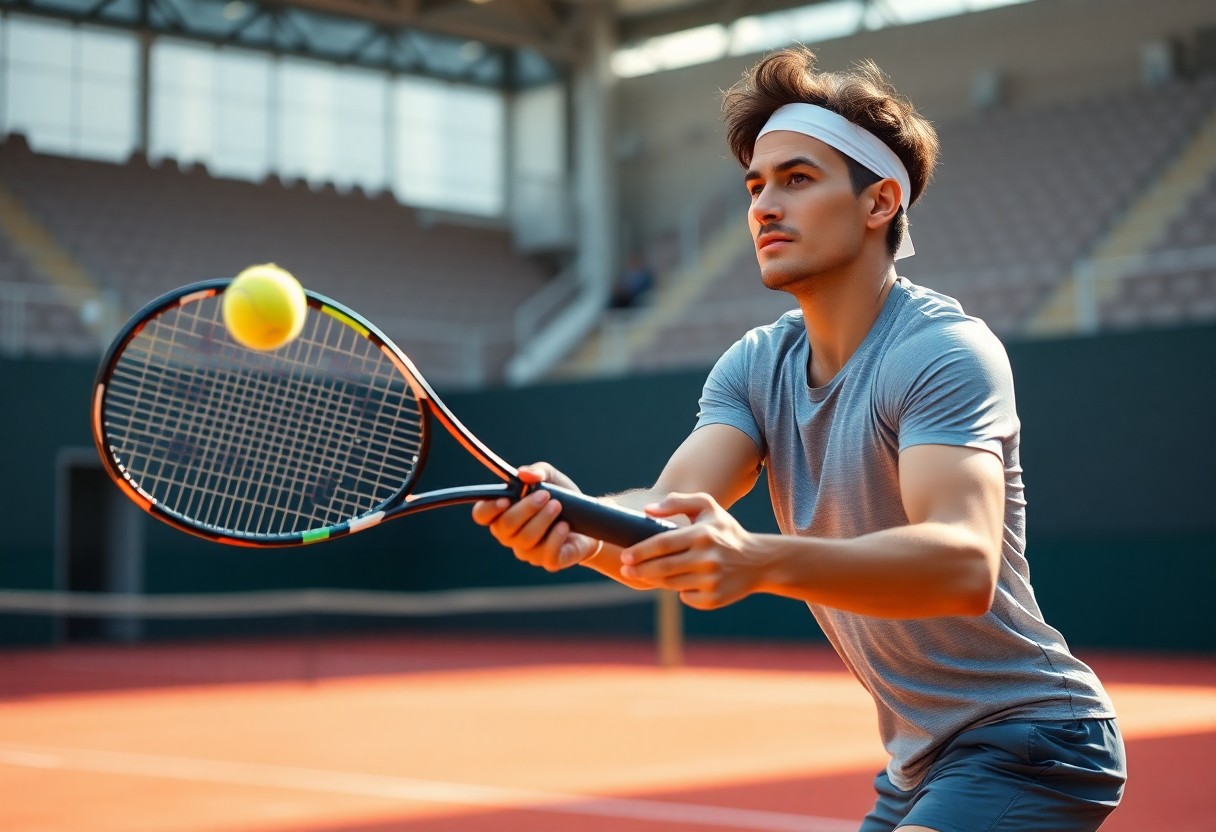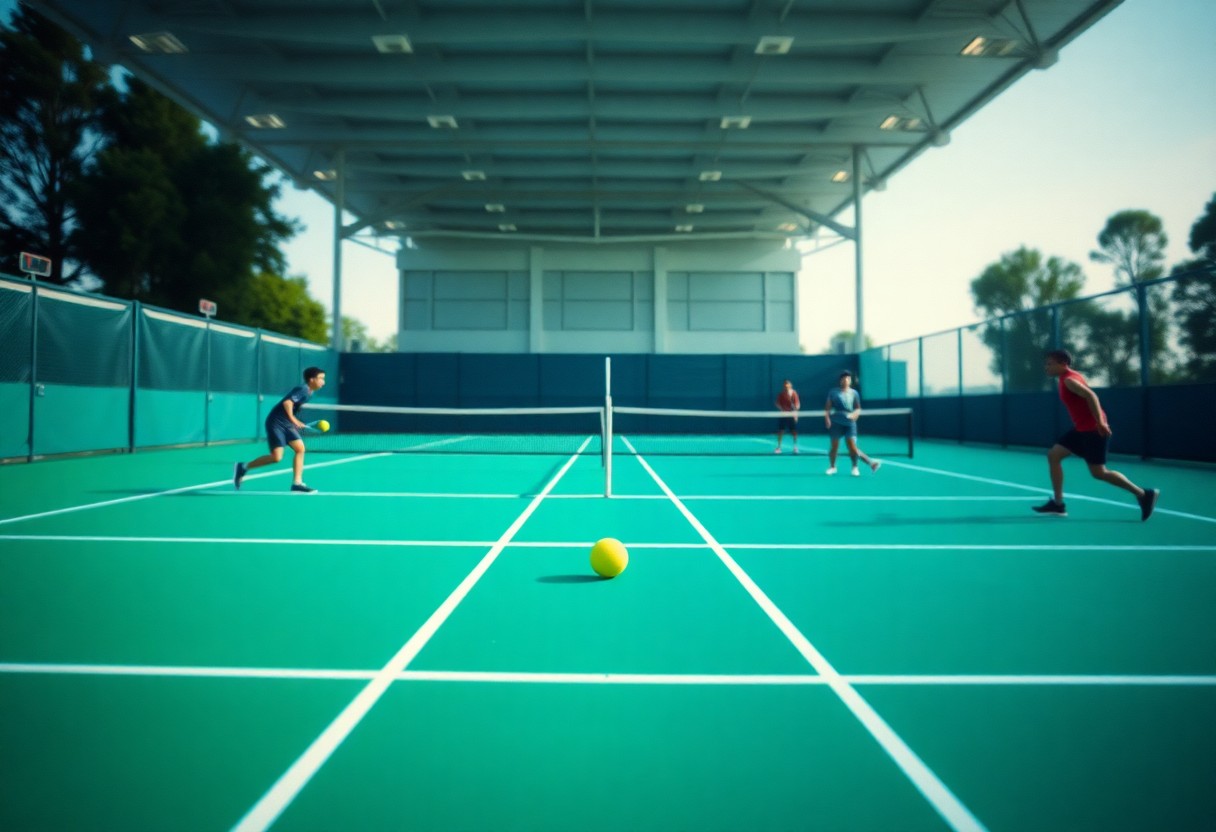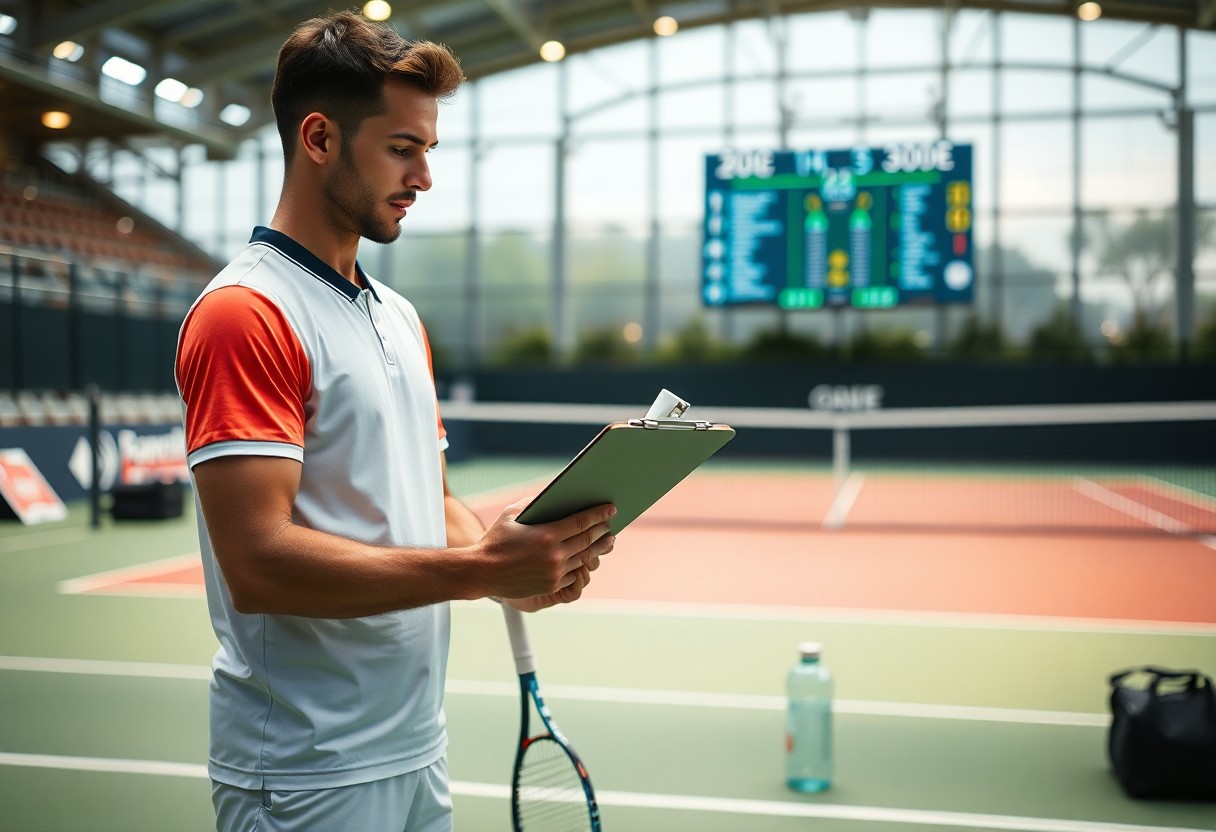Many aspiring tennis players overlook the crucial strategies that can elevate their game from average to exceptional. This guide explores ten timeless techniques that every player, regardless of skill level, should master to enhance their performance on the court. From effective serving tactics to strategic positioning, these strategies will help players develop a more dynamic and competitive edge, ensuring they can face any opponent with confidence and skill. Embrace these foundational principles to transform your gameplay and achieve your tennis goals.
Types of Tennis Strategies
Tennis strategies can be categorized broadly based on the player’s style, strengths, and the match context. Understanding these different approaches is vital for adapting to various opponents and match situations. Here are the key types of strategies:
| Offensive Strategies | Defensive Strategies |
| Serve and Volley | Counterpunching |
| Aggressive Baseline Play | Rallying |
| Drop Shot Tactics | Waiting for Errors |
| Approach Shots | Defensive Lobs |
Any player should be familiar with these strategies to develop a versatile game plan.
Offensive Strategies
Offensive strategies focus on taking control of points and dictating the pace of the match. Key techniques include using powerful serves or aggressive baseline shots to pressure the opponent. Players often engage in the serve and volley approach, quickly closing in on the net after serving, forcing their opponents into defensive positions. This proactive style aims for quick points and can disrupt an opponent’s rhythm.
Defensive Strategies
Defensive strategies prioritize staying in the rally and forcing errors from the opponent. This includes playing from the baseline, focusing on consistency, and making strategic shots like lobs and cross-court returns. Defensive players excel at reading the game, retrieving challenging shots, and capitalizing on opponents’ mistakes, often leading to long rallies where patience pays off.
Effective defensive strategies require strong fundamentals and mental resilience. Players often develop skills such as footwork and anticipation to enhance their ability to react promptly. Mastering the art of rallying allows defenders to dictate the tempo and timing of points, exploiting their opponents’ impatience. Utilizing a blend of defensive lobs and deep shots helps maintain the pressure while waiting for an opportune moment to counterattack.
Key Factors in Developing Strategies
Developing effective tennis strategies involves a combination of factors that influence performance on the court. Key elements include self-awareness, understanding your opponent’s strengths, adapting to court conditions, and recognizing how surface types can impact gameplay. Each factor intertwines to shape a comprehensive game plan that can evolve throughout a match.
Understanding Your Opponent
A deep understanding of your opponent is necessary for effective strategy. Observing their playing style, recognizing their weaknesses, and analyzing their reaction to different shots allows players to anticipate moves better and exploit gaps in their defense. Knowledge of an opponent’s tendencies provides a competitive edge that can enhance overall performance.
Court Conditions and Surface Types
Court conditions significantly affect how the game is played. Different surfaces such as grass, clay, and hard courts alter ball speed and bounce. Players must adjust their strategies based on surface characteristics like traction, stability, and reaction time. Factors like humidity and temperature can further influence play, making environmental awareness vital.
| Court Surface | Characteristics |
| Grass | Fast, low bounce, slippery |
| Clay | Slow, high bounce, more sliding |
| Hard | Medium speed, consistent bounce |
| Indoor/Outdoor | May affect humidity and lighting |
Surface types can dictate specific strategies. Grass courts favor players with an aggressive serve-and-volley game due to the quick points they generate. Clay surfaces reward baseline play and strategic rallies, encouraging players to construct points gradually. Understanding these factors allows players to adjust tactics accordingly and gain the upper hand.
- Surface Type
- Playing Style
- Ball Behavior
- Match Conditions
- Adaptability
Thou must adapt your strategy based on all these elements to maximize your chances of success during matches.
Essential Tips for Mastering Tennis Strategies
To effectively implement tennis strategies, players must focus on core elements that enhance their game. Key tips include analyzing your opponent’s weaknesses, adjusting your positioning based on their shots, and harnessing the power of your serve and return. Prioritize strong footwork and agility to maintain court coverage. Additionally, develop a strong mental approach that fosters resilience and adaptability during matches. Knowledge and practice of these strategies will elevate your performance considerably.
- Analyze your opponent’s weaknesses
- Adjust positioning based on shots
- Hone your serve
- Develop strong footwork
- Foster a resilient mental approach
Knowing these important tips provides a framework for consistent improvement on the court.
Practice Drills
Incorporating specific practice drills into your routine helps reinforce key strategies. Focus on drills that simulate match situations, emphasizing shot selection and decision-making under pressure. For instance, practice targeted serving to different areas of the service box, or engage in rally drills where you must respond to varying shots.
Mental Preparation
Mental preparation plays a significant role in implementing effective tennis strategies. Players should visualize their game plan before matches, envisioning scenarios based on their opponent’s style. This mental rehearsal enhances focus and confidence, providing clarity when executing strategies during high-pressure situations. Understanding the psychological aspects can elevate your overall performance and decision-making on the court.
Mental preparation involves techniques such as mindfulness, visualization, and positive self-talk. Engaging in visualization of specific shots and match scenarios can help calm nerves and create a game plan. Establishing a pre-match routine that includes breathing exercises contributes to emotional stability. Studies show that athletes who practice mental imagery often report improved focus and performance levels. By prioritizing mental readiness, players can confidently execute their strategies regardless of the match’s intensity.
Step-by-Step Guide to Implementing Strategies
| Step | Description |
| 1 | Analyze your current game and identify strengths and weaknesses. |
| 2 | Set specific goals for each match to focus on. |
| 3 | Practice your strategies in drills to build muscle memory. |
| 4 | Implement your strategies during practice matches. |
| 5 | Reflect on the effectiveness of your strategies and adjust as needed. |
Analyzing Your Game
Start by reviewing your past performances to gain insights into your playing style. Focus on key metrics like first-serve percentage and unforced errors to pinpoint areas for improvement. For instance, if you notice you struggle on return games, devise a strategy that emphasizes aggressive returns or targeted positioning. Utilize video analysis tools to identify patterns, making adjustments based on solid data rather than instinct alone.
Adjusting Mid-Match
Being adaptable during a match is necessary for success. If you notice your opponent’s game changing, such as an improvement in their serve or increased accuracy, shift your strategy accordingly. For example, if they begin to dominate the baseline, utilize more drop shots or net play to disrupt their rhythm. Stay observant and flexible, aiming to counter their strengths and exploit their weaknesses as the match evolves.
To effectively adjust mid-match, focus on specific cues from your opponent’s play. If they consistently hit to your forehand, be ready to reposition and counter with aggressive shots or take a step closer to the net. Analyze their tendencies: are they playing safer or risking more? Your ability to make instantaneous strategic shifts can often turn the tide of a match, lending a psychological advantage while keeping your opponent uncertain.
Pros and Cons of Various Tennis Strategies
| Pros | Cons |
|---|---|
| Can lead to quick points. | Higher risk of unforced errors. |
| Pressure on the opponent. | Requires consistent execution. |
| Great for dominant players. | Less effective against agile opponents. |
| Defensive strategy can conserve energy. | May result in longer rallies. |
| Time to analyze opponent’s weaknesses. | Can be seen as passive. |
| Develops tactical adaptability. | Over-reliance might lead to predictability. |
| Enhances mental resilience. | Can frustrate aggressive players. |
| Better for clay court play. | May hinder attacking play on faster surfaces. |
Aggressive Play vs. Defensive Play
Aggressive play emphasizes taking control of the match by hitting powerful shots and dictating points, leading to quick victories. In contrast, defensive play focuses on maintaining rallies and forcing opponents into errors, often requiring patience and resilience. While aggressive players aim to overpower opponents, defensive players rely on strategic placement and endurance to stay in the game.
The Importance of Flexibility
Adaptability is vital in tennis; players must switch strategies as the match evolves. A rigid approach can make one predictable and susceptible to opponents’ tactics. Being flexible allows players to capitalize on their opponent’s weaknesses, adjust to different court surfaces, and respond to changing match dynamics, ensuring sustained competitive performance.
In high-stakes matches, flexibility can make the difference between winning and losing. For instance, players like Roger Federer have excelled by seamlessly adjusting their tactics mid-game. One moment, they might play aggressively, taking risks; the next, they switch to a defensive stance to exploit their opponent’s vulnerabilities. This transition keeps opponents guessing and creates opportunities for breakthroughs. Practicing various styles enhances adaptability, enabling players to switch gears based on opponents’ momentum and weaknesses, ultimately leading to more successful outcomes on the court.
Strategic Drills to Enhance Performance
Implementing strategic drills can elevate your game significantly. By focusing on specific aspects like shot placement, decision-making, and tactical awareness, players can transform their practice sessions into opportunities for real-game improvement. Incorporating drills that mirror match situations and refine your skills is necessary for achieving a competitive edge.
Match Simulation Exercises
Engaging in match simulation exercises allows players to mimic competitive scenarios, which fosters better decision-making and shot selection under pressure. These exercises can include timed games where players must adhere to specific strategies or positions, reflecting real match conditions and enhancing mental toughness.
Partner-Based Drills
Conducting partner-based drills provides valuable practice in a social environment, allowing players to refine their skills interactively. These drills can range from groundstroke exchanges to targeted volleys that encourage consistent placement and movement strategies, making practice more dynamic and engaging.
Partner-based drills can be structured to focus on various elements of play. For example, players can set up a drill where one partner consistently practices executing drop shots while the other retrieves and returns them from specific court positions. This targeted approach sharpens not only finesse but also the ability to adjust footwork and positioning under pressure. Furthermore, alternating roles allows both players to gain insights, fostering a deeper understanding of tactical advantages, thereby enhancing overall gameplay through cooperative learning.
Summing Up
So, mastering these ten timeless tennis strategies equips players with the vital skills needed to elevate their game. By focusing on footwork, shot selection, and mental toughness, athletes can enhance their overall performance on the court. Regardless of skill level, consistently applying these strategies will lead to improved tactics and greater success in matches. As players incorporate these principles into their training, they will develop a deeper understanding of the sport, ultimately paving the way for long-term achievement and enjoyment in tennis.
FAQ
Q: What are some necessary strategies for improving my serve?
A: Focus on consistency and placement. Work on varying your serve types, such as flat, slice, and kick serves. Also, practice generating power while maintaining proper technique to increase your effectiveness on the court.
Q: How can I effectively construct points during a match?
A: Use a combination of shot selection and court positioning to build points. Aim to move your opponent around by hitting to different areas of the court, and set up for an easier, finishing shot, ideally targeting their weaker side.
Q: What role does mental toughness play in tennis strategies?
A: Mental toughness helps players stay focused and composed under pressure. Implement strategies like visualization and positive self-talk to maintain confidence and manage stress during crucial moments of matches.




